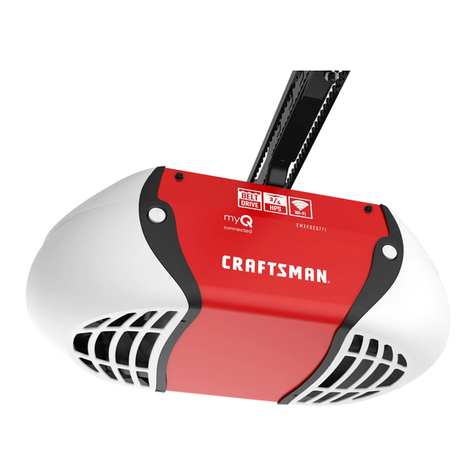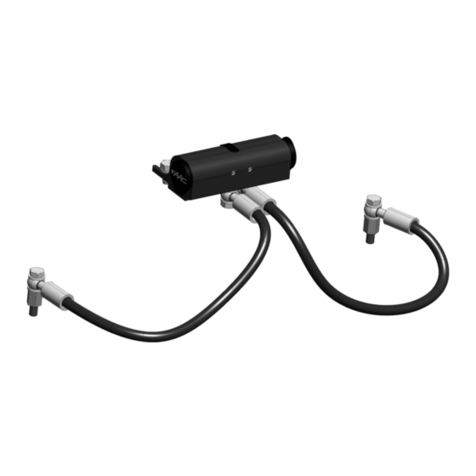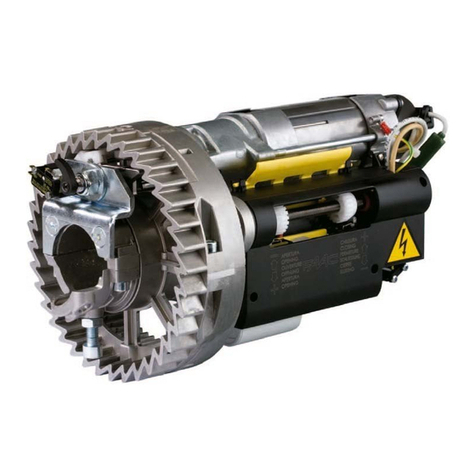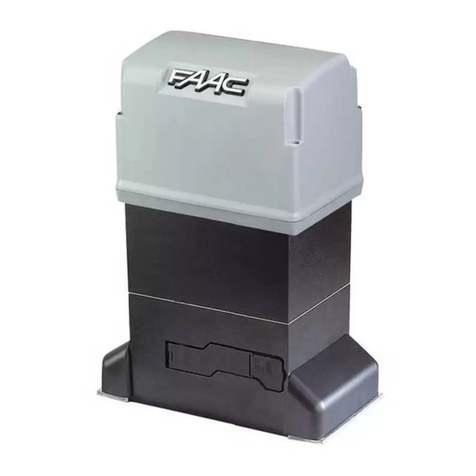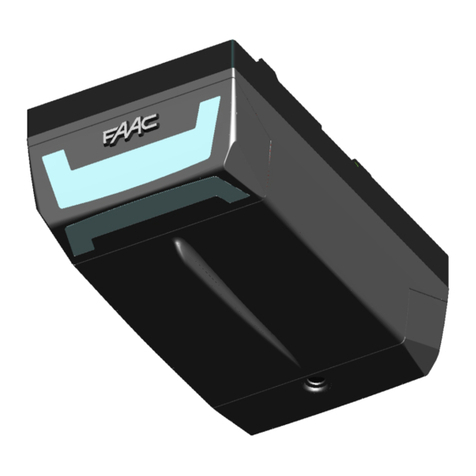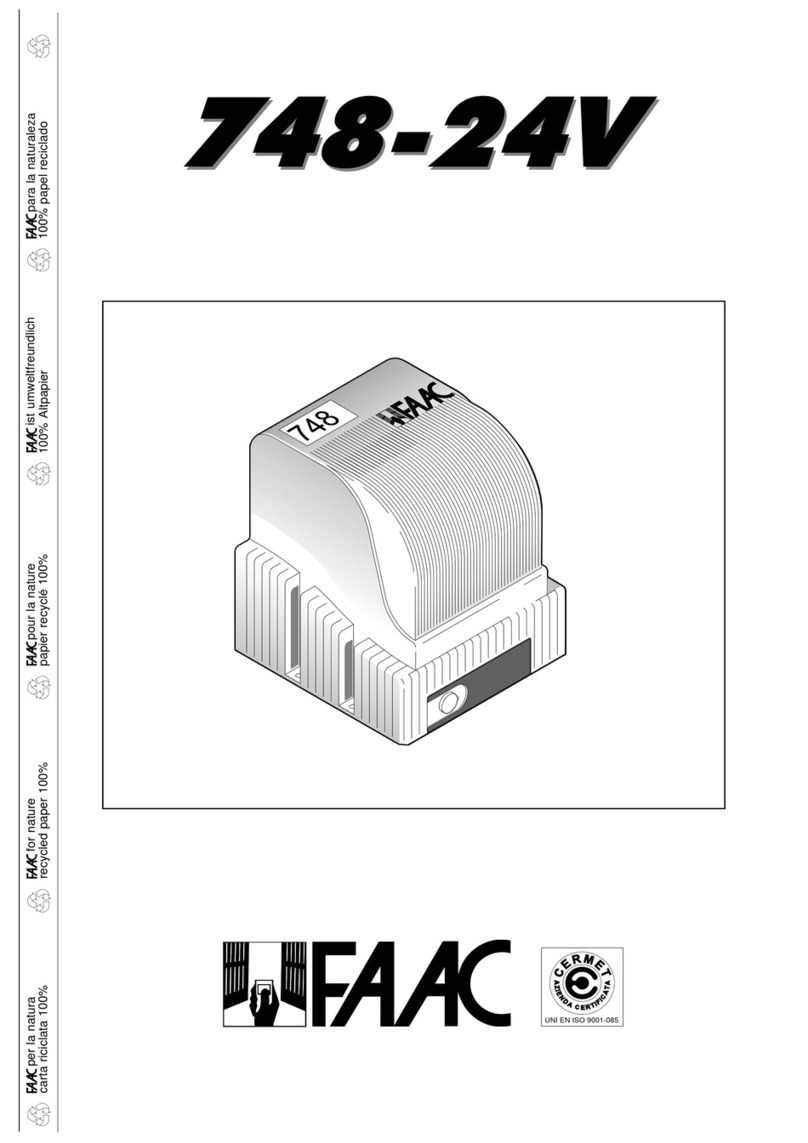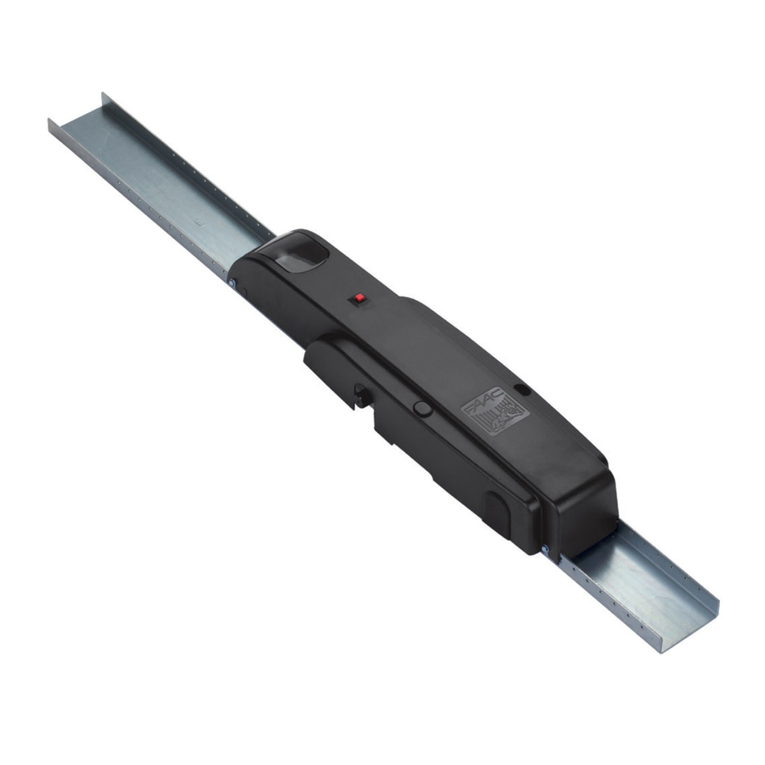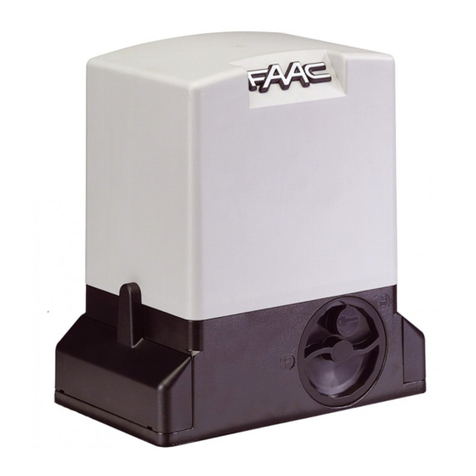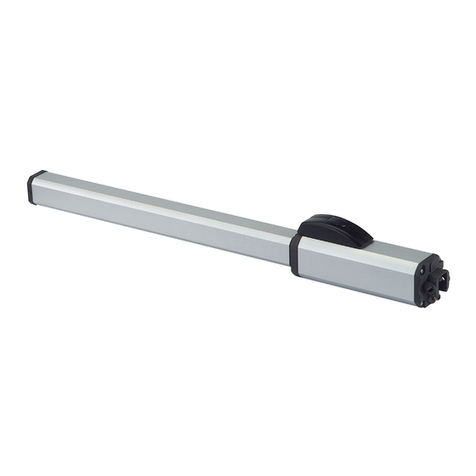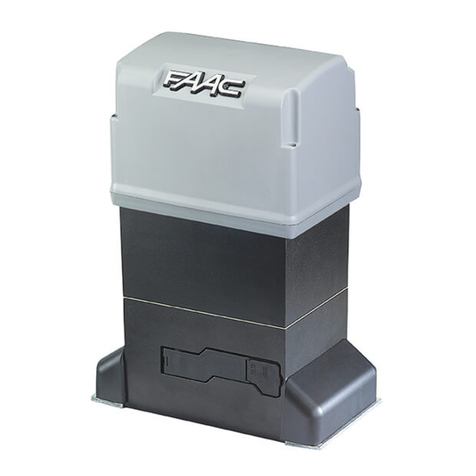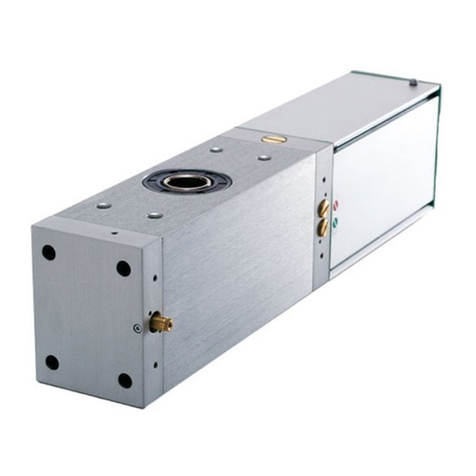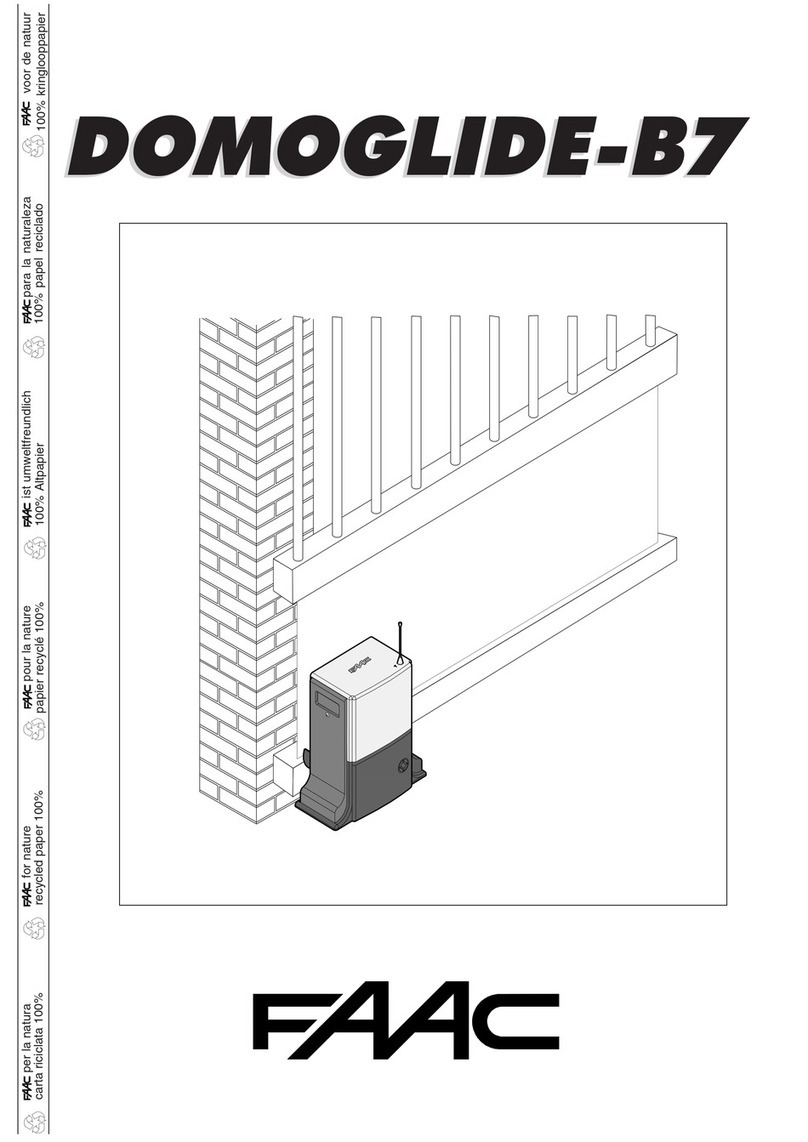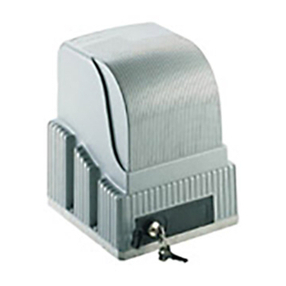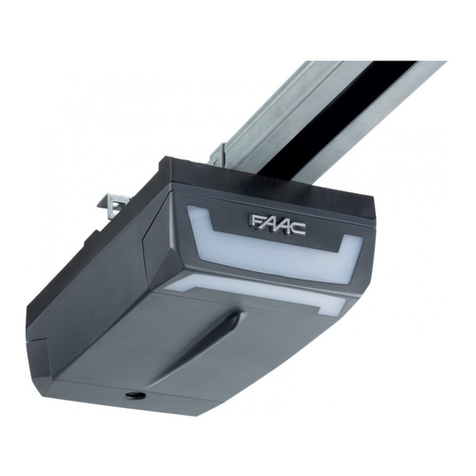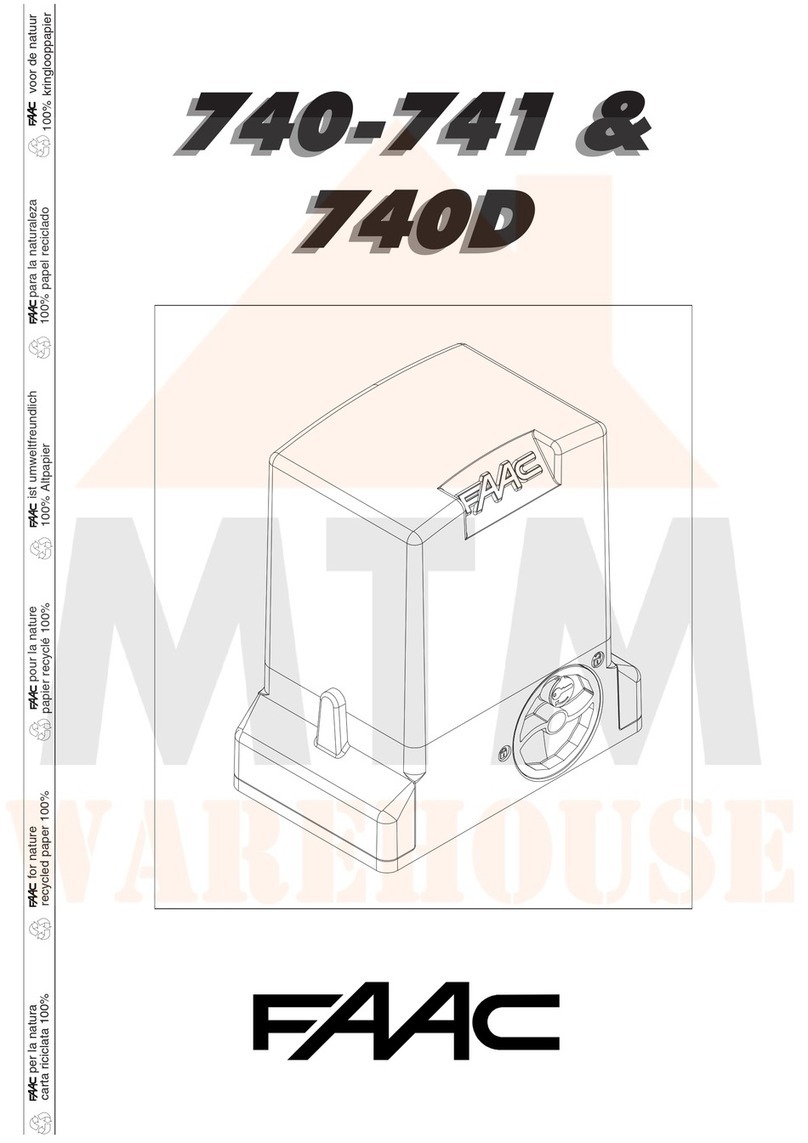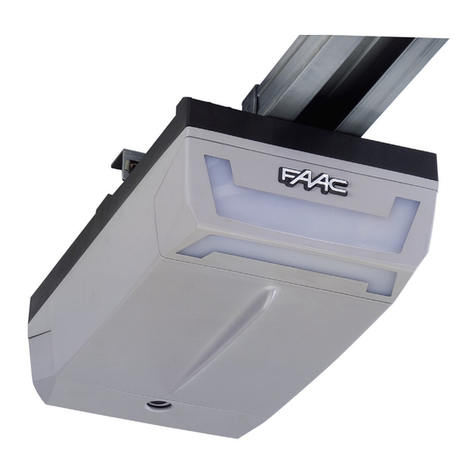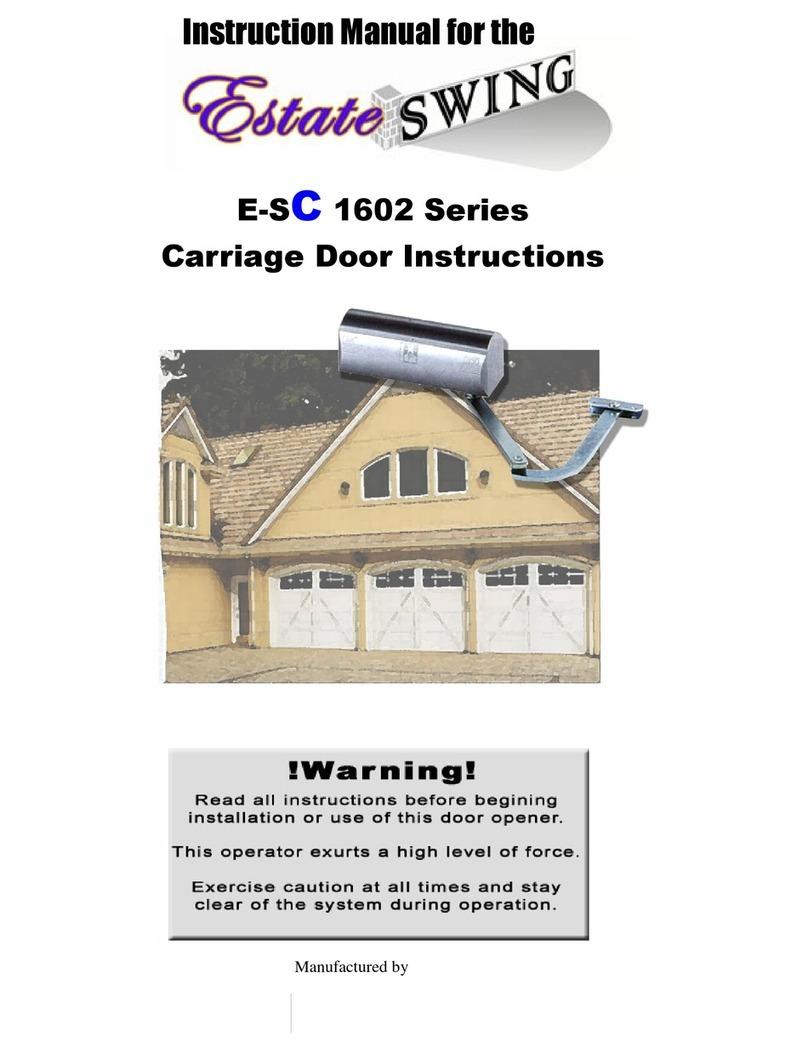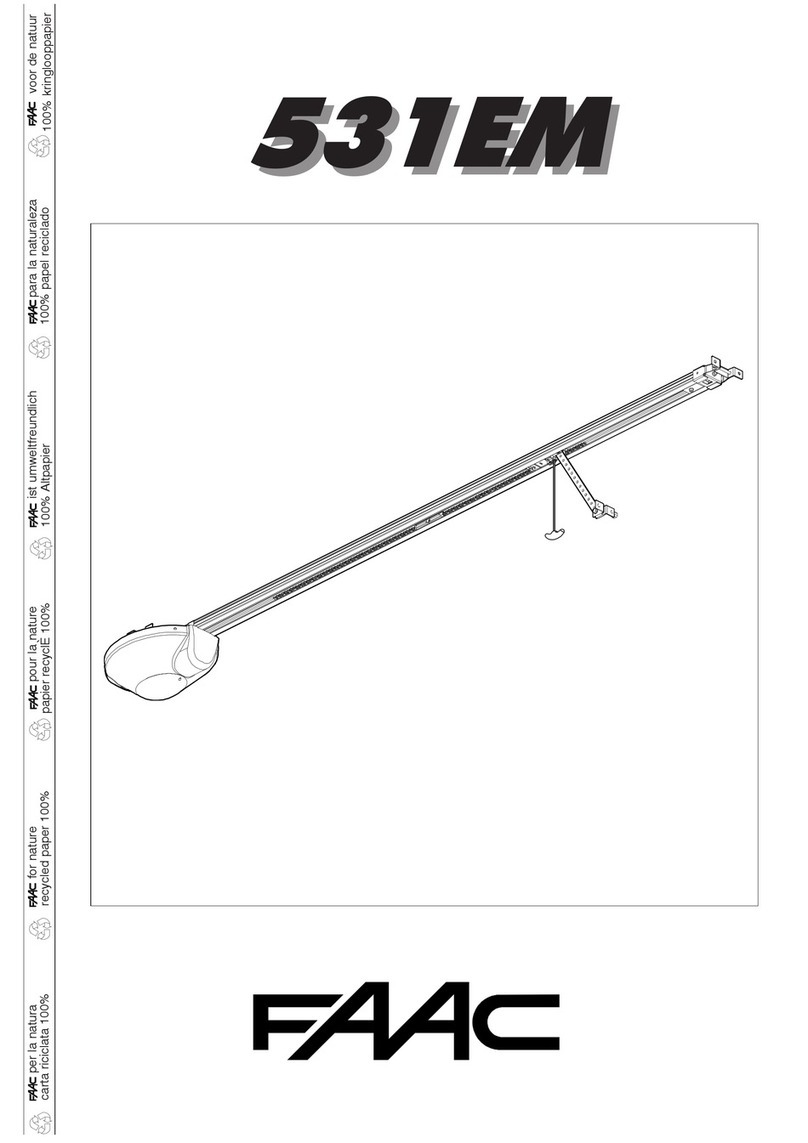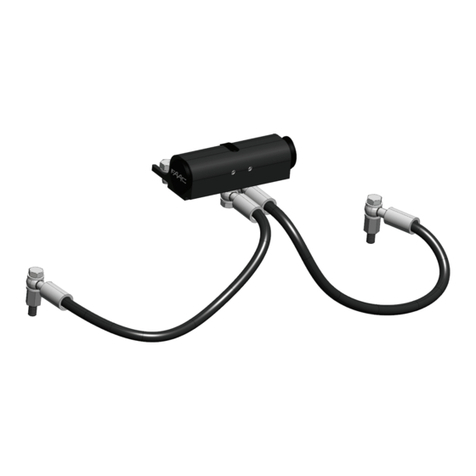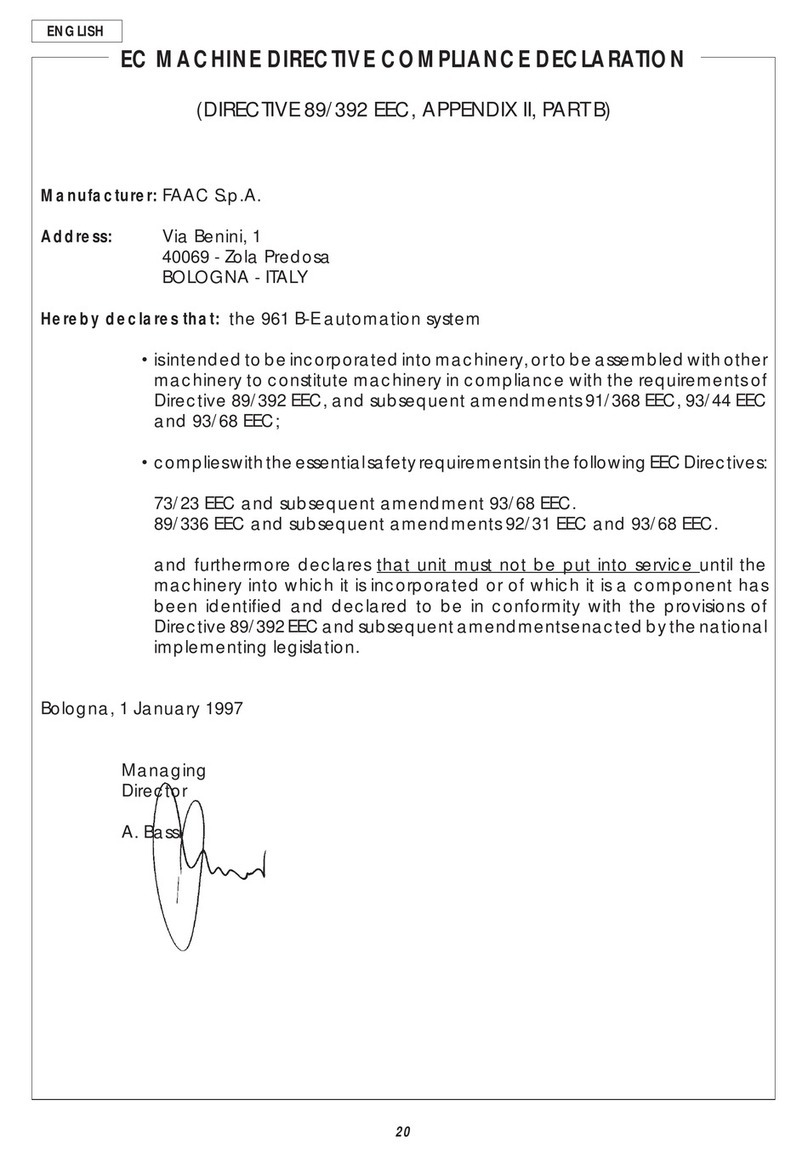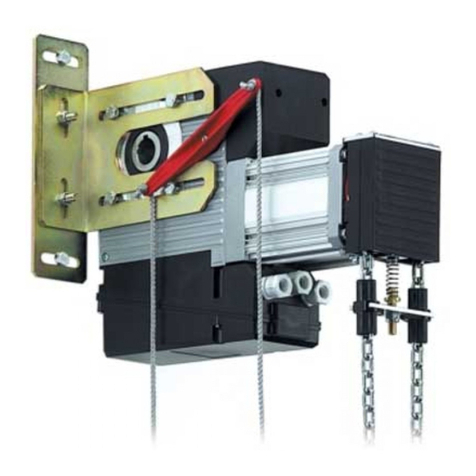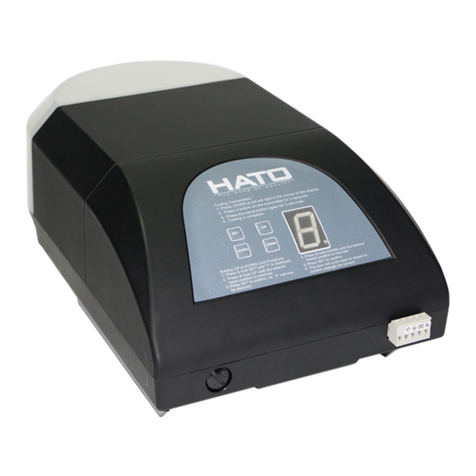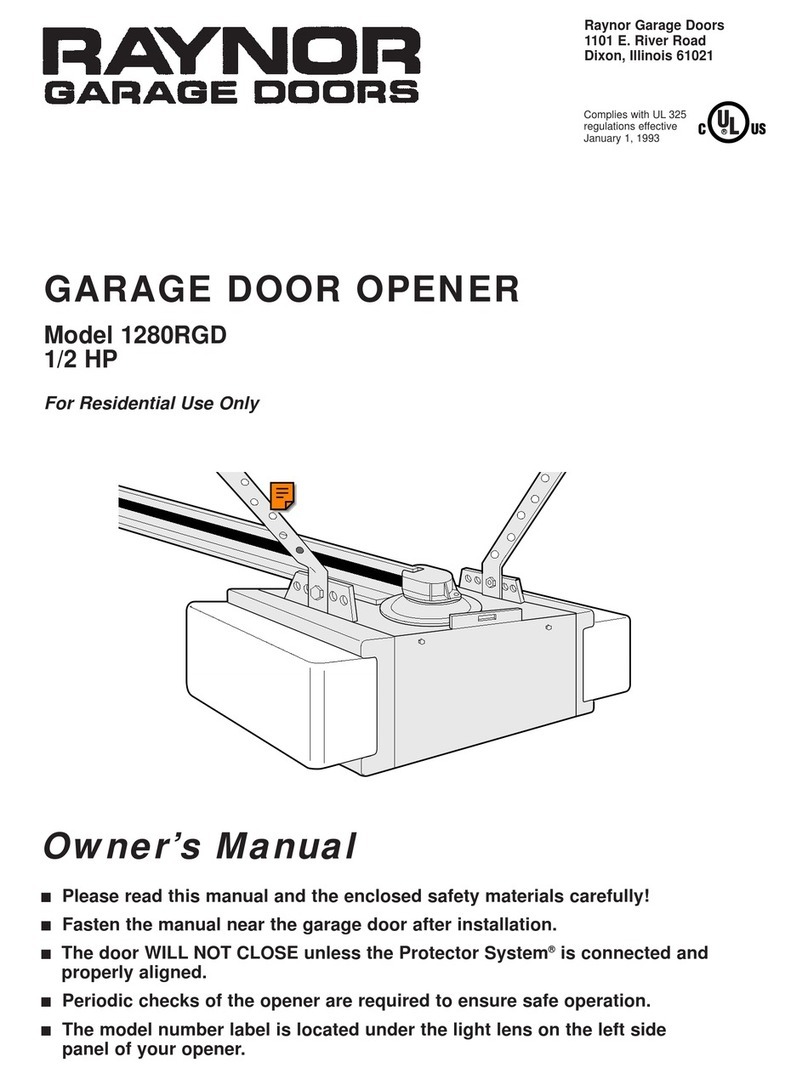
7
ITALIANO
ITALIANO
5.3. PROGRAMMAZIONE
Per programmare il funzionamento dell'automazione è
necessario agire sugli appositi microinterruttori come da
schema seguente.
ÜDopo ogni intervento sulla programmazione è necessario
togliere momentaneamente tensione alla scheda.
SW1 - Coppia max allo spunto
La coppia max allo spunto permette di escludere, solo nella
fase iniziale di movimento, la regolazione della frizione
elettronica (Trimmer TR3).
SW2 - Logica di funzionamento
Il comportamento dell'automazione nelle diverse logiche, è
indicato nelle Tab. 5-6 .
SW3 - Colpo in chiusura
Il colpo in chiusura, attivo solo utilizzando i finecorsa, ritarda di
4 secondi lo spegnimento del motore dopo l'intervento del
finecorsa di chiusura.
SW4 - Prelampeggio
E' possibile selezionare un prelampeggio di 3 sec. del
lampeggiatore prima di ogni movimento. Ciò permette di
avvisarechiunquesiainprossimitàdellaporta,dell'imminente
movimento.
Logica SW2
Automatica ON
Semiautomatica OFF
Coppia max
allo spunto
SW1
Si ON
No OFF
Colpo in chiusura
SW3
Si ON
No OFF
Prelampeggio
SW4
Si ON
No OFF
1234
ON
OFF
TAB. 6 LOGICA SEMIAUTOMATICA
SICUREZZE
nessun effetto
(inibisce apertura)
inibisce chiusura
inverte il moto
nessun effetto
nessun effetto
(inibisce ap/ch)
STATO BASCULANTE
CHIUSA
APERTA
IN CHIUSURA
IN APERTURA
BLOCCATO
OPEN
apre (1)
chiude (1)
inverte il moto
blocca
chiude/apre (1)(2)
STOP
nessun effetto
nessun effetto
blocca
blocca
nessun effetto
IMPULSI
IMPULSI
SICUREZZE
nessun effetto
(inibisce apertura)
congela la pausa fino al
disimpegno
inverte il moto
nessun effetto
nessun effetto
(inibisce ap/ch)
STOP
nessun effetto
blocca il conteggio del
tempopausa
blocca
blocca
nessun effetto
STATO BASCULANTE
CHIUSA
APERTA IN PAUSA
IN CHIUSURA
IN APERTURA
BLOCCATA
OPEN
apre e richiude dopo il
tempo di pausa (1)
chiude (1)
inverte il moto
blocca
chiude/apre (1)(2)
TAB. 5 LOGICA AUTOMATICA
(1) con prelampeggio selezionato, il movimento inizia dopo 3 sec.
(2) un OPEN a cancello bloccato, avvia il movimento opposto al precedente.
5.4. PROVA DELL'AUTOMAZIONE
Note sul funzionamento:
•La scheda 550MP esegue un controllo elettronico (che
richiede la presenza del motore collegato) prima di ogni
partenza. Se si tenta di far funzionare la scheda senza il carico
del motore o con un carico insufficiente, non viene fornita
tensione sull'uscita motore e viene segnalata l'anomalia
mediante il lampeggio del led DL2.
•Fra un impulso di OPEN e l'altro occorre attendere un tempo
minimo di 1,5 secondi.
•La luce di cortesia si attiva alla partenza del motore e
permane per un tempo di circa 90 secondi dal termine del
movimento.
5.4.1. VERIFICA DEL SENSO DI ROTAZIONE
1) Togliere alimentazione all'impianto.
2) Portare manualmente la porta a metà apertura.
3) Bloccare l'operatore (vedi capitolo 8)
4) Ripristinare la tensione di alimentazione.
5) Inviare un impulso di apertura (OPEN) e verificare che si
comandi un'apertura della porta.
Nel caso si comandi una chiusura, è necessario invertire sulla
morsettiera della scheda le fasi del motore elettrico (cavi
marrone e nero).
Nell'applicazionecondueoperatori,aimorsetti"COM,OP,CL",
della scheda 550MP e della scheda 550 Slave, assegnare la
stessacolorazionedeicavie,dovendoinvertirelefasi,invertirle
per entrambi i motori.
5.4.2. IMPOSTAZIONE DEL TEMPO DI LAVORO
Regolare il trimmer
TR1
per ottenere un tempo di lavoro che
permetta di mantenere il motore elettrico alimentato per
qualche secondo dopo l'arrivo della porta sugli arresti
meccanici.
Questa regolazione rappresenta anche il tempo massimo per
raggiungere i finecorsa (opzionali).
5.4.3. IMPOSTAZIONE DEL TEMPO PAUSA
Selezionando la logica automatica, è possibile regolare il
tempo di pausa agendo sul trimmer
TR2
.
5.4.4 REGOLAZIONE DELLA FRIZIONE ELETTRONICA
(ANTISCHIACCIAMENTO)
L'apparecchiatura550MPèfornita diunsistemaelettronicodi
regolazione della coppia del motore che (in funzione della
regolazionestessa)limitalaspintadellaportainpresenzadiun
ostacolo.
Alla rimozione dell'ostacolo, la porta prosegue il movimento
fino al raggiungimento del fine corsa o fino al termine del
tempo di lavoro.
La regolazione si effettua agendo sul trimmer
TR3
.
Si raccomanda di tarare la frizione elettronica in conformità
alle normative vigenti.
5.4.5. REGOLAZIONE DEI FINECORSA (OPZIONALI)
Aprire la porta fino al punto desiderato; regolare la camma
fino all' attivazione del micropulsante FCA (Fig. 11).
Chiudere la porta; regolare la camma fino all' attivazione del
micropulsante FCC (Fig. 11).
Serrare le viti poste sulle camme.
5.4.6. MONTAGGIO CARTER
Collegare il cavetto di OPEN al pulsante posto sul carter
dell'operatore.
Fissare il carter serrando le quattro viti laterali.
Applicare al carter a pressione, i 2 tappi di plastica nelle asole
laterali non utilizzate dall'albero dell'operatore.
Applicare al carter a pressione, il tappo di plastica nell'asola
frontale per accedere al sistema di sblocco non utilizzata.
6. MONTAGGIO GRUPPO MOTORIDUTTORE
In base alle esigenze, è possibile montare il gruppo
motoriduttore in due modi:
•Con l'albero di rotazione in alto (Fig. 17)
Il supporto scheda viene fissato al motoriduttore mediante 4
viti che stringono dadi inseriti nelle apposite guide.
•Con l'albero di rotazione in basso (Fig. 18)
Il supporto scheda viene fissato alla calotta del motore
elettrico mediante 4 viti.
DS1
+
-
Fig. 16
La rotazione in senso orario dei trimmer,
incrementa le regolazioni.
La rotazione in senso antiorario dei trimmer,
diminuisce le regolazioni.
